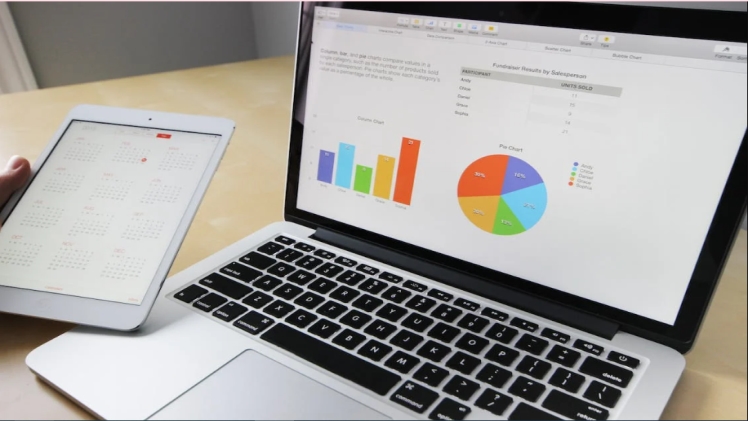Business leaders are always looking to improve workplace efficiency, and they usually plan to do so by investing in new technology. Thus, come 2023, businesses must invest in a few technologies that will guarantee improvement in their work efficiency.
Here are a few such technologies that will surely bring about this revolution.
Cloud Computing
The cloud computing market is set to reach a market value of almost $950 billion by 2026. In 2021, the market was valued at $445 billion. That means the market will reach its estimated 2026 value at a CAGR of 16.3%.
Almost 92% of organizations have adopted multi-cloud or cloud computing technology. Approximately 82% of large enterprises are using hybrid cloud infrastructure. It’s easy to see that cloud computing is being universally adopted by businesses worldwide. Thus, there is no reason why your business should fall behind in this case.
Cloud computing is the practice of storing and running software on shared networks rather than having all data stored on individual computers. If a business uses cloud computing, it can access its software from any device, as long as it has an internet connection.
Cloud computing makes it easy for businesses to use multiple operating systems, devices, and applications at once. Cloud services are used in many industries today. For instance, Amazon Web Services (AWS) offers cloud services for companies that need large amounts of storage or processing power for their websites or mobile apps. Similarly, other cloud-based services can be incorporated into your workplace to ensure better efficiency.
You can work with an information technology business consultant to set up your company’s cloud servers and services. They can also train your employees on how to make the most of this technology, as well as help troubleshoot any problems you might face with it.
Data Analytics
Data analytics is the process of analyzing data, extracting insights, and understanding trends. Data analytics can help improve workplace efficiency by providing a complete picture of your business and its performance.
For example, if you want to improve customer experience, data analytics can help you identify what customers like or dislike about your products or services. For this data to be useful, though, it has to be well organized and easy to access so that it can be analyzed quickly and easily by anyone who needs it.
This means that if you’re looking for ways to improve workplace efficiency with technology in 2023, you must consider investing in data analytics by incorporating newer practices such as business intelligence and data mining.
Virtual Collaboration Tools
Virtual collaboration tools are used to enable teams to work together remotely. They can be used to share information, communicate, and collaborate online. This technology has been in use for several years now and is growing rapidly as more companies embrace remote working practices.
Virtual collaboration tools allow you to connect with people in different locations through video calls, voice calls, or text chats. These tools allow you to share documents, files, and other information which can be accessed by multiple users simultaneously at any given time. Some examples of virtual collaboration tools include Discord, Slack, Zoom Rooms, etc.
Supply Chain Automation
Supply chain automation is a technology that can help you improve your supply chain. Supply chains are the systems for getting a product or service from its original source to its final consumer. These automated systems have become increasingly complex as companies have grown in size and scope.
Supply chain automation, sometimes called “digitalization,” involves using advanced technologies such as robotics, AI, sensors, IoT devices, blockchain technology, and analytics to improve efficiency while reducing costs and waste.
In addition to improving efficiency within the supply chain itself, supply chain automation also has major implications for what happens after products reach consumers’ hands. These include increased quality control, reduced production costs, more streamlined manufacturing processes, etc.
Artificial Intelligence
Artificial intelligence (AI) is a broad term that encompasses many different types of technologies. It has the potential to improve workplace efficiency and can be used to automate tasks, improve customer service, and predict future events. The technology has been around since the 1950s, but it’s only recently that its potential for use in businesses has been realized.
AI technologies are now being implemented in industries such as healthcare, manufacturing, transportation, retail and financial services. How you use AI at your workplace depends on the type of business you are in. For instance, if you’re a company that provides weather data via satellites, you can use AI to present the weather data in the form of weather intelligence.
Thus, instead of simply telling your clients that it will be raining tomorrow, your AI will tell them that it will be raining, so they must avoid certain roads and drive at certain speeds to prevent road accidents.
The AI market will reach a value of $190 billion by 2025. At present, AI is being used in businesses in different ways. By 2025, it will touch many other aspects of how day-to-day business operations are conducted and will make things more efficient.
Thus, it’ll be wise if you incorporate this technology into your day-to-day business operations as soon as possible. Otherwise, once the market becomes saturated, you’ll have to start using AI from scratch, which will then take a long time for you to make it more efficient.
Robotic Process Automation (RPA)
Robotic process automation (RPA) is one of the most popular ways that companies are using to automate business processes. RPA uses software to automate tasks that are repetitive or can be completed by a machine, such as processing invoices and approving new hires.
It can be used in any industry, but it’s especially useful for routine tasks that are complex or involve a lot of manual work.
The technologies we’ve talked about are already being used by many companies today. They have proven to be effective in improving workplace efficiency, and they will continue to do so in the future. Thus, unless you adopt these modern technologies at your workplace, you’ll only fall behind your competitors.

